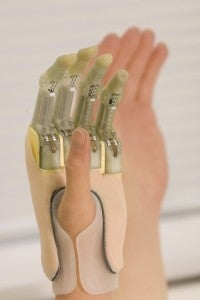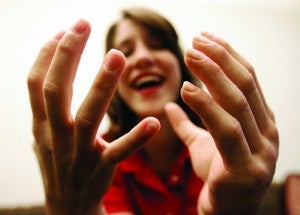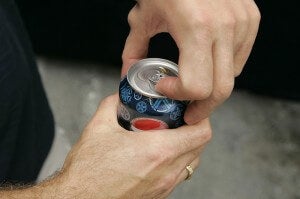
In the world of prosthetics, there’s really no such thing as “one size fits all.” Back when we discussed the i-Limb from Touch Bionics, we mentioned that the Scottish company’s next big development would be bionic fingers. Well they’ve arrived. Pro-Digits are powered mechanical fingers which can be controlled by measuring electric signals from nerves using pads on the skin. Touch Bionics has fitted more than thirty patients with Pro-Digits devices, each uniquely built to correspond to differing levels of amputation. As with the i-Limb, the bionic fingers can detect objects as they close to prevent crushing something delicate and can be installed in different grips to help with tasks such as typing. Check out the Pro-Digits in action in the video below.
There’s been a ton of really exciting news about prosthetics this year. Besides i-Limb, we’ve seen artificial hands and arms from Deka, DARPA’s Prosthetics Revolution Program, and Smart Hand. Artificial intelligence in lower limb prostheses is also advancing at a wonderful pace. While each device has its own merits, Touch Bionics has geared i-Limb and Pro-Digits to be market ready and user friendly as soon as possible. There are already more than 600 users of i-Limb and it looks like Touch Bionics is trying to get Pro-Digits to enjoy the same popularity.
Typically a mechanized prosthesis can handle one kind of input: pressure sensitive pads, electrical signals measured from the skin, or wires directly connected to nerves. Pro-Digits can be adapted to handle either of the first two inputs and Touch Bionics plans on eventually designing products that can handle the third. Myo-electric sensors measure nerve impulses through the skin. Basically, an amputee’s nervous system will still send commands to the missing limb and these sensors can detect those commands and use them to direct the artificial fingers.
As each prosthesis is different, and each patient has a different amputation, getting Pro-Digits to respond to myo-electric control can take some calibration. New patients shouldn’t expect to have the level of control demonstrated in the video right away. Touch Bionics does have software guided feedback to help train new users, and information is routed from the limb using Bluetooth. It would be awesome (and completely unlikely) to have Pro-Digits adapted to serve as a headset for a phone.
One of the really remarkable features of Pro-Digits is that they can be cosmetically matched to the rest of your body. Using a life-like surface (called “LivingSkin”) Touch Bionics will shape a prosthesis so that it can closely resemble a natural hand. Don’t believe it could pass in public? The pictures of customized i-Limb hands will change your mind.


Touch Bionics estimates that there are 52,000 Europeans who may be a match for Pro-Digits, and more than 1.2 million such individuals worldwide. That’s a lot of bionic fingers to be made. Each prosthesis is likely to have a different price tag (depending on the exact form it takes) but the i-Limb retails for around $18k (USD). That’s outside of the budget of many individuals, especially in countries where insurance companies do not provide prosthesis coverage (the US being one of them). My big hope is that as motors, sensors, and electronics continue to miniaturize and reduce in price, prosthetics will come down in costs. It will likely take many years, but I suspect that eventually we will see more mechanized prosthesis in use around the world. Or, considering how well Pro-Digits can blend in, maybe we won’t notice them at all.
[photo and video credit: Touch Bionics]



